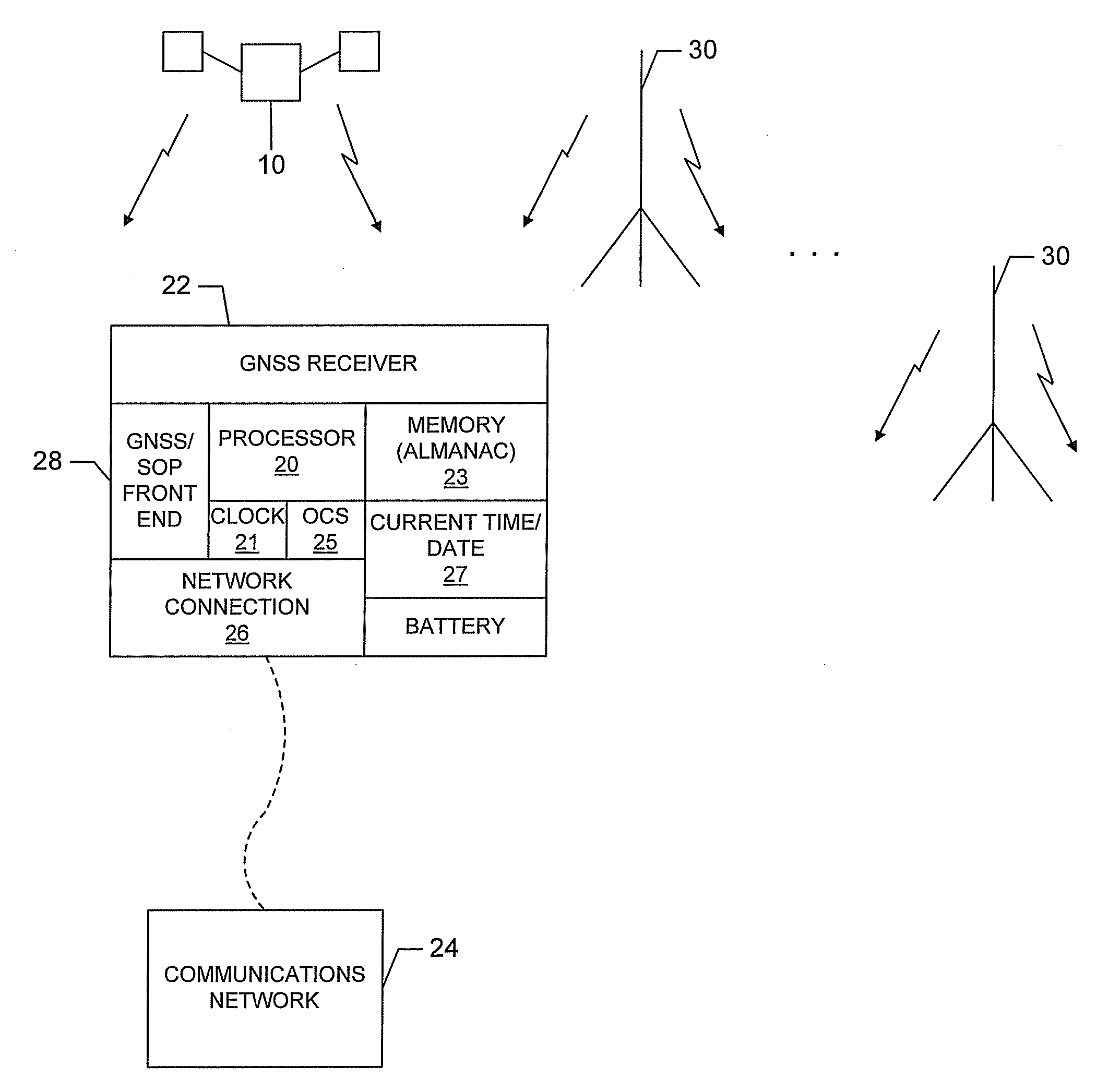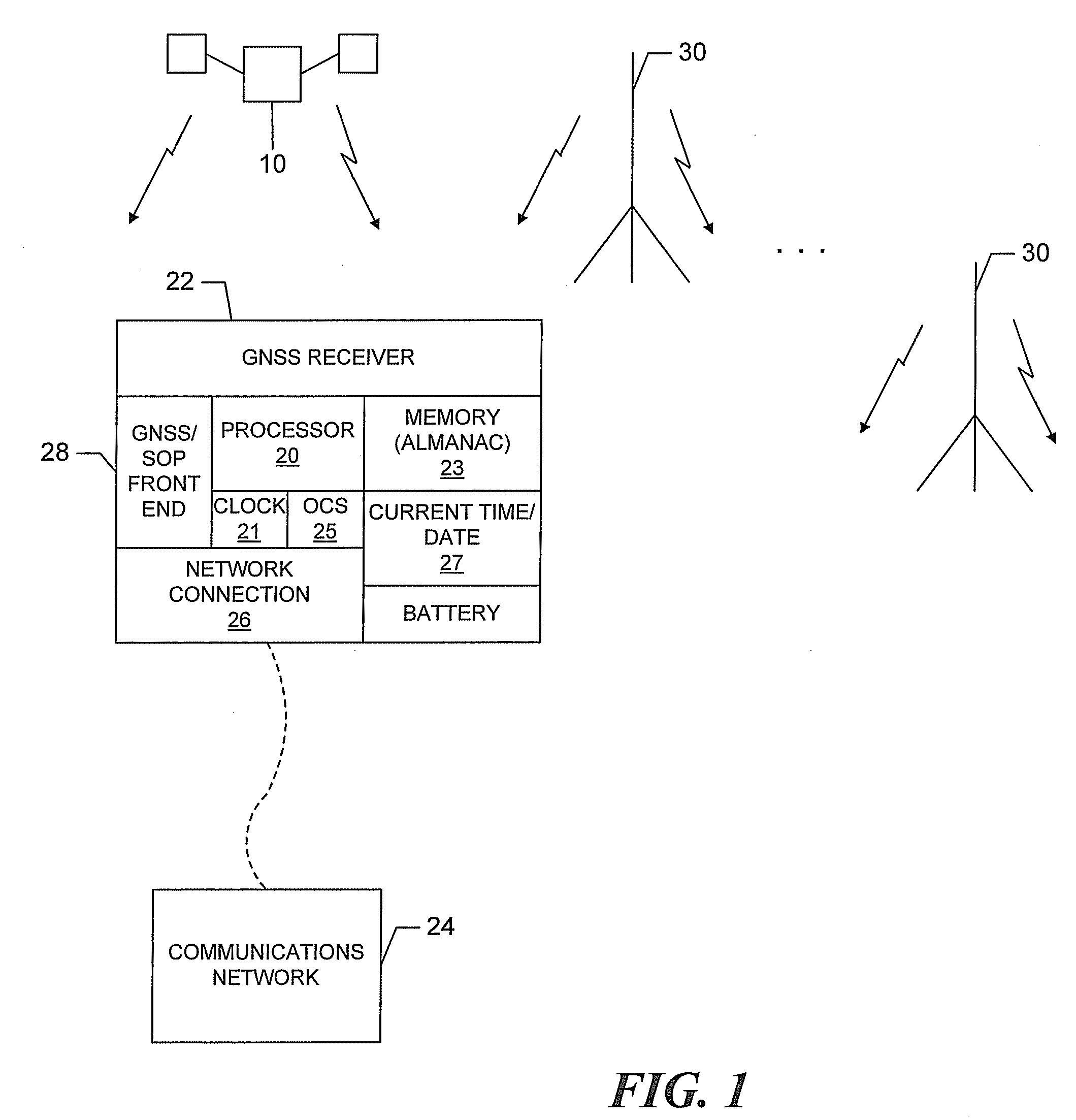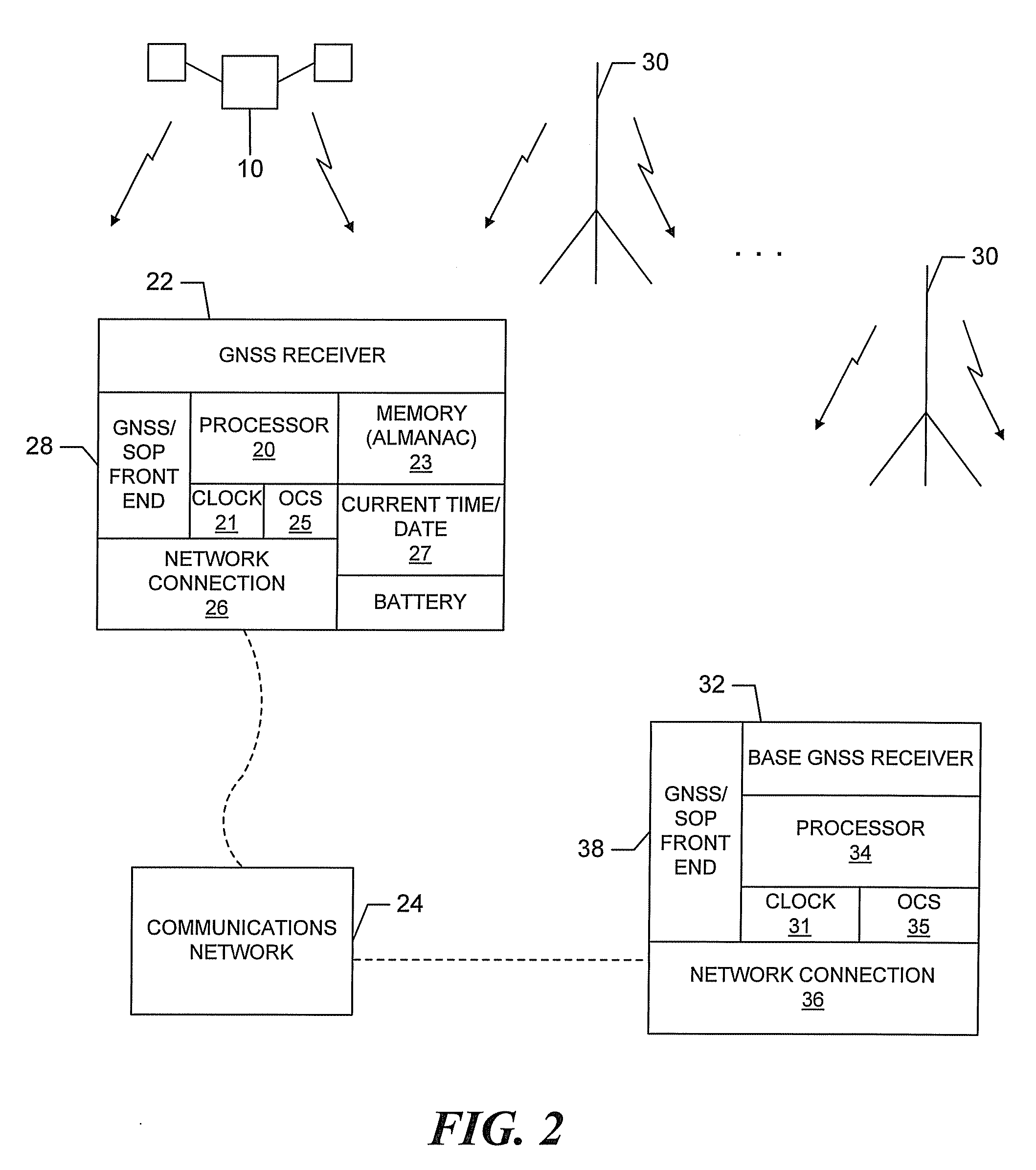GNSS receiver using signals of opportunity and assistance information to reduce the time to first fix
- Summary
- Abstract
- Description
- Claims
- Application Information
AI Technical Summary
Benefits of technology
Problems solved by technology
Method used
Image
Examples
Embodiment Construction
[0020]Referring to FIG. 1, a remote GNSS receiver 22 is illustrated connected to a communication network 24, such as, for example, the internet or a private network, through a connection 26, which may be wired (indicated by dotted line) or wireless. The remote receiver includes one or more processors 20, an oscillator 25 and an oscillator driven time of day clock 21 that perform GNSS signal acquisition and tracking and provide position solutions in a known manner. In addition, the remote receiver includes a battery-backed real time clock (RTC) 27 that maintains the current time and date during power down cycles and a memory 23 that contains an Almanac of GNSS satellite information. The real time clock, which operates in a known manner utilizing a low power oscillator and low power timing keeping logic, maintains the current time and date during power down cycles utilizing relatively little battery power. The Almanac, which is good for approximately 1 year without updating, and the c...
PUM
 Login to View More
Login to View More Abstract
Description
Claims
Application Information
 Login to View More
Login to View More - R&D
- Intellectual Property
- Life Sciences
- Materials
- Tech Scout
- Unparalleled Data Quality
- Higher Quality Content
- 60% Fewer Hallucinations
Browse by: Latest US Patents, China's latest patents, Technical Efficacy Thesaurus, Application Domain, Technology Topic, Popular Technical Reports.
© 2025 PatSnap. All rights reserved.Legal|Privacy policy|Modern Slavery Act Transparency Statement|Sitemap|About US| Contact US: help@patsnap.com



